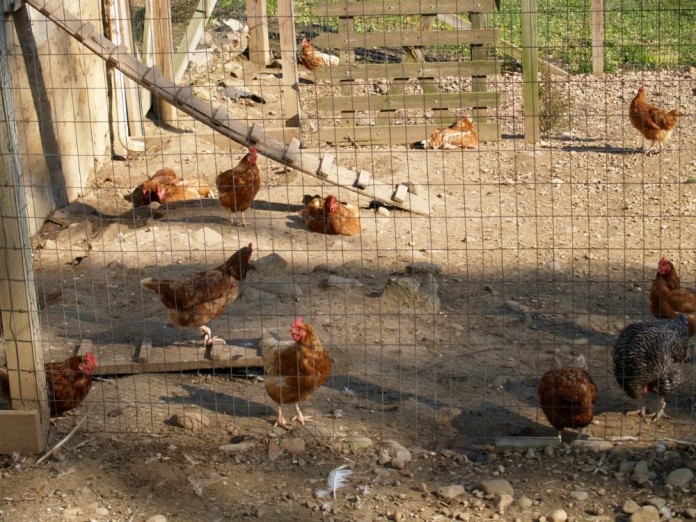COLUMBIA, Mo. — Interest in keeping chickens in the backyard as a source of eggs and meat is on the rise among both urban and suburban dwellers.
Chickens can help with pest control around the yard and be fun to watch, but they do have some requirements that are not widely known, according to Jess Lyons, a small flock specialist with University of Missouri Extension.
Early weeks
For starters, Lyons says owners need to be aware of basic brooding needs in the first three to four weeks of a chick’s life. These include clean water, quality chick starter feed, clean litter (pine or cedar shavings are recommended) and a circular confined area to keep the chicks from wandering from the heat source.
Owners also need to provide a building large enough for proper air circulation but small enough to keep chicks from getting too cold in winter.
Providing chickens with outside runs will reduce the building space needs if the pen area provides shade.
“For home flocks, plan to have a minimum of two feet of floor space per adult chicken, more space usually simplifies management.
Housing should provide easy access to feed and water and provide nesting areas for hens in egg production,” said Lyons.
Although not mandatory, it is also a good idea to provide perches. These allow birds to stay off the floor, particularly as they roost at night and this will provide training for young layers to jump up into their nest when they begin egg production.
Oh yeah. Manure.
Manure tends to accumulate in greatest concentration under the roost area, keeping the rest of the bedding material cleaner.
Allow six to 10 inches of linear perch space for each chicken housed, said Lyons.
Manure will tend to build up most under the roosts and around feeders and waters. These areas will need the most attention and frequent cleaning.
Nest boxes
Lyons says it is also important to provide nest boxes as furnishings for a hen house so she has a secluded place to lay eggs. Commercial or homemade boxes both work.
Box height and width should be 12 to 15 inches by at least 12 inches deep or more for heavy breed hens. One nest box is required for each four to five hens. Place nest boxes no less than 18 inches above the floor.
Very heavy hens may need lower nests and lower roosts.
Add at least two to three inches of clean, dry shavings to reduce egg breakage and minimize the number of soiled eggs.
Water and feed
Another essential consideration is the water needs for poultry. If inadequate water is available, not only will eating decrease, but so will egg production and growth.
“Fountain-type drinkers are affordable and easily moved. Water should be changed frequently in order to prevent bacterial growth, over-warming in summer or freezing in winter,” said Lyons.
It is a good idea to also provide at least two or three additional drinkers as a buffer against spillage or leakage.
Poultry owners also need to make sure that feed is not stale, rancid or moldy. This can cause disease or nutritional deficiencies if consumed.
“Plan to purchase new feed at least every two months, feed the appropriate feed for the age of your chickens, and follow feeding instructions available from the feed tag,” said Lyons.
Always store feed away from heat, moisture and direct sunlight and protect it from rodents.
Feeders come in a variety of sizes and designs and different sizes are needed depending on whether you are feeding young chicks or adult chickens.
Feeders should also be raised off the ground and protected from moisture, wild animals and free-flying birds.
Egg production
It is common for egg production to decline during very hot or very cold weather, and hens lay fewer eggs as they get older.
Most hens will also go out of egg production and lose feathers during a molt. It is a process that owners need to understand, along with the role of roosters.
“Hens do not need roosters present to produce eggs. Increasing day length, not the presence of males, stimulates egg production. A rule of thumb is that four to five hens will supply two to four eggs per day during their production cycle,” said Lyons.
Be good neighbor
But most importantly, urban and suburban dwellers raising chickens need to be good neighbors by keeping chickens confined to their property and properly disposing of used poultry litter.
“Although chickens pose a relatively low risk of giving disease to humans, there are a few infections that can be transmitted back and forth. Proper care and handling of eggs and processing of poultry carcasses are critical to avoid problems,” said Lyons.











Better than having a CAFO which destroys lives and home values. A return to this would encourage more young people to become farmers.